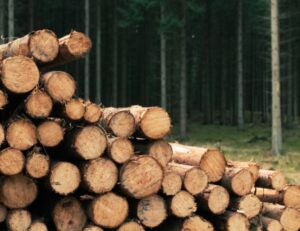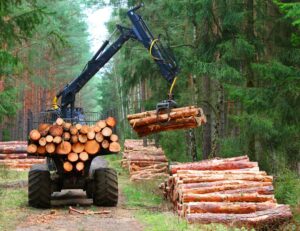Sustainable timber harvesting is an essential practice for maintaining the health and vitality of our forests while meeting the demands of industries and communities that rely on wood products. By adopting sustainable methods, we ensure that forests continue to thrive and provide ecological, economic, and social benefits for future generations. In this blog, we’ll explore what sustainable timber harvesting entails, its impact on forest health, and how it supports biodiversity.
What is Sustainable Timber Harvesting?
Sustainable timber harvesting refers to the careful management of forest resources to ensure that the rate of timber extraction does not exceed the forest’s natural ability to regenerate. The goal is to balance the need for wood products with the preservation of forest ecosystems. Sustainable practices include:
- Selective Logging: Instead of clear-cutting entire areas, selective logging involves choosing specific trees to harvest while leaving others to maintain the forest’s structure. This method minimizes disturbance to the surrounding environment and helps preserve the habitat for wildlife.
- Reduced Impact Logging (RIL): RIL techniques aim to minimize damage to the forest floor, soil, and remaining trees during the harvesting process. This includes using specialized equipment and techniques to reduce soil erosion and compaction.
- Regeneration Planning: After harvesting, sustainable practices include planning for the forest’s regeneration. This may involve replanting native tree species, allowing natural regrowth, or managing invasive species to promote a healthy ecosystem.
- Monitoring and Certification: Sustainable timber harvesting is often guided by certification standards from organizations such as the Forest Stewardship Council (FSC) or the Sustainable Forestry Initiative (SFI). These certifications ensure that harvesting practices adhere to environmental and social guidelines.
Impact on Forest Health
Sustainable timber harvesting plays a crucial role in maintaining the health of forest ecosystems. Here’s how:
- Maintains Forest Structure: By avoiding clear-cutting and employing selective logging, sustainable practices help preserve the forest’s structural complexity. This includes maintaining a diverse range of tree sizes, ages, and species, which supports a stable and resilient ecosystem.
- Promotes Soil Health: Reduced impact logging techniques help prevent soil erosion and compaction. Healthy soil is essential for supporting new plant growth and maintaining the overall fertility of the forest.
- Supports Water Quality: Sustainable harvesting practices help protect water resources by preventing sediment runoff into streams and rivers. This is crucial for maintaining clean water habitats for aquatic life.
- Encourages Biodiversity: By preserving habitat diversity and avoiding extensive clear-cutting, sustainable timber harvesting helps protect the wide range of plant and animal species that depend on forests. This includes species that thrive in different forest layers, from the forest floor to the canopy.
How Sustainable Timber Harvesting Supports Biodiversity
Biodiversity is the variety of life forms in an ecosystem, and healthy forests are rich in biodiversity. Sustainable timber harvesting supports biodiversity in several ways:
- Habitat Preservation: By avoiding large-scale deforestation, sustainable practices help preserve the habitats of numerous species. This is especially important for species that rely on specific forest conditions or resources.
- Diverse Plant Life: Maintaining a variety of tree species through selective logging and regeneration planning supports diverse plant communities. This diversity provides food and shelter for various wildlife species.
- Wildlife Corridors: Sustainable practices often include the creation of wildlife corridors—areas of habitat that connect different parts of the forest. These corridors allow animals to move freely and access resources throughout their range.
- Invasive Species Management: Sustainable timber harvesting includes efforts to control and manage invasive species that can threaten native flora and fauna. This helps maintain the ecological balance of the forest.
Conclusion
Sustainable timber harvesting is a vital practice for ensuring that our forests remain healthy and vibrant while meeting the demands for wood products. By adopting responsible harvesting methods, we can protect forest ecosystems, support biodiversity, and contribute to the long-term sustainability of our natural resources. At Trumbull Forest Products, we are committed to sustainable practices that benefit both the environment and the communities we serve.
If you have any questions about our sustainable timber harvesting practices or need more information, feel free to contact us. Let’s work together to ensure a healthy and sustainable future for our forests.














